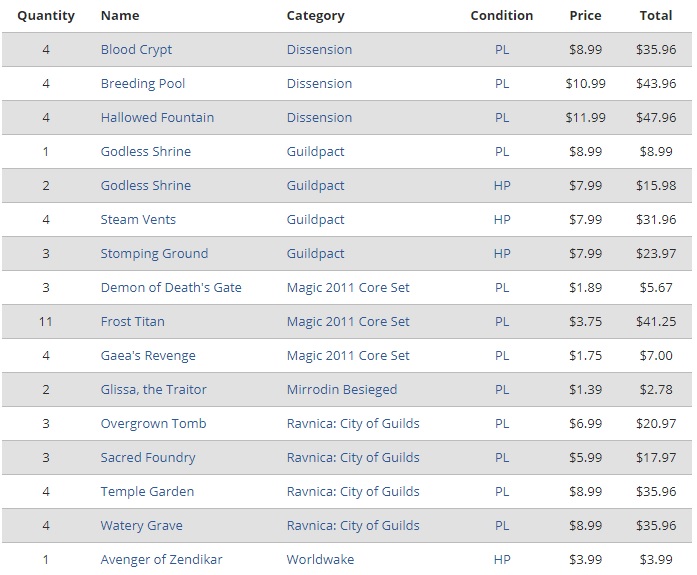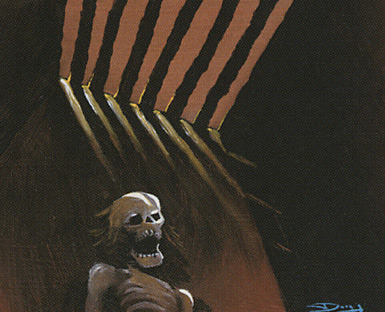Are you a Quiet Speculation member?
If not, now is a perfect time to join up! Our powerful tools, breaking-news analysis, and exclusive Discord channel will make sure you stay up to date and ahead of the curve.
Welcome back readers!
Today I'd like to start with a stroll down memory lane. Back in 2004, I was a freshman at Clemson University (Go Tigers!) when my friend Luke mentioned this website called "Facebook." In comparison to Myspace, it was a cleaner social networking site, and also exclusive (you needed a .edu email address in order to establish an account). Everyone on campus was creating accounts and adding as many friends as possible.
Obviously, it blew up. However, what's important to consider is that at the time, a lot of people didn't know whether or not it was needed—after all, we already had Myspace. Everyone already had a Myspace account at the time, so this was just the "new upstart."
Then Facebook decided to go public and a lot of people had no idea how to value it. After all, they sold advertisement space and the internet had tons of competition in that realm.
The company was initially valued at $104 billion (it now stands somewhere shy of $500 billion). Many people thought that initial valuation was way overpriced. It was difficult to see what possible money could be made from this social media endeavor. And it seemed like Facebook would be competing for the same clientele as Myspace, and thus simply stealing from their share of the pie. Nobody realized how much they would grow the pie itself.
When New Demand Arises
What does this have to do with Magic? The point I want to make is that demand for a new product or innovation is often difficult—if not nearly impossible—to see from the outset. While you can definitely make money by speculating on individual cards, you can make a ton more money if you see the market demand early on.
In late May 2011, WotC held their Magic Online Community Cup, where they debuted a new format called Modern. I placed the following order on June 5th, 2011 from Star City Games:

I had read up about the new format from the Community Cup. At the time, I saw several things going for it.
- It was WotC-driven. This is important because they have the financial resources, advertising reach, and control over the game to make sure that formats they promote succeed.
- It was different. At the time the major formats were Standard, Legacy, Extended, Vintage, and EDH (WotC would create the Commander name later). Modern presented a large card pool, but was drastically different from the other formats, and deck brewers had a field day coming up with the archetypes.
- It was cheap. It's easy to forget that before Modern became a format, many of its staples were forgotten or relegated to casual decks. The larger the card pool, the more we see the cream rise to the top—only the best of the best become Legacy or Vintage staples. When those cards aren't legal in the format, other cards are given the opportunity to take their place.
At the time of the Community Cup, a lot of people viewed Modern as an interesting concept but didn't take it too seriously. After all, WotC made its money on Standard, and players seemed to enjoy Legacy enough to scratch any eternal itch they might have—many wondered whether there was a need for Modern. Admittedly, despite seeing the promise of this new format, even I clearly underestimated it, as you can tell based on the fact that I only bought a playset (or less) of each original shockland.
Unfortunately, the Trader Tools pricing data only goes back to 2013, which is after Return to Ravnica came out. However, I distinctly remember when Modern first blew up as a format shocklands skyrocketed in price, with the Guildpact and Dissension ones being the most expensive thanks to being drafted less. One could even trade two Dissension Hallowed Fountain's for a Tundra straight across.
If we can notice these shifts in demand early on, we can make sure to get in on the ground floor. This is why QS sends floor reporters to Pro Tours. The Pro Tour gets so much coverage and hype that when a card has a lot of success on the Pro Tour, we always see its value rise, sometimes dramatically. The best opportunities for profits (and for actually getting your orders filled) occurs when you're ahead of the game.
The New Kid: Pauper
In December 2017, Channel Fireball announced they would be running Pauper events at Grand Prixs. They doubled down on that promise in March, scheduling more events. Pauper has always been pretty popular on MTGO, but it hadn't taken off in paper yet. The announcement caused a spike in a lot of random Pauper staples, and created demand for cards that were previously relegated to bulk bins.
We have cards like Oubliette that are now worth $40-plus, despite being a reprintable common (though many argue that the wording on the card would make it difficult to reprint). And there are so many other good options on this front.
Many of my fellow writers and I on QS have discussed some of these targets in the past. There are likely tons of copies still sitting in long white boxes gathering dust at game stores all around the world, forgotten. The worst part is that the value is very time-dependent—as soon as they are reprinted again, they are likely to lose any value they had stored up.
We are seeing Pauper staples grow in value. However, due to their more common nature, their price ceiling is typically pretty low. That means that a lot of people are unlikely to be willing to "dig for dimes" in bulk. Those who do will likely find a treasure trove of nickles, dimes, and quarter sifting through bulk that was previously ignored.
Predictions for the Future
Finally, here are some of my thoughts on how I see the big-picture trends in Magic shaping up.
Prediction #1
I believe we're going to see bulk become "tiered." The current system of purchasing bulk assumes that it's all basically worthless, and the lowest common denominator price is paid for all of it (around $3 per 1000 C/U mixed). This is actually fantastic if you purchase bulk, because your risk is basically nothing. If there's nothing good in it you can always ship it off to someone else. Your profit is whatever good stuff you pull out of it.
When I write articles about selling at GPs (and what different vendors are buying) almost my entire stock comes from bulk I've picked. I've gotten pretty good at it—if you read those articles you'll note that I've made a fair amount of money doing this. Admittedly I put a ton of time into sorting, though I actually enjoy it, so it's not so much work as it is relaxing.
I'm always happiest picking up older bulk rather than newer. I have a lot more bulk commons and uncommons from Innistrad forward. If I felt confident that the bulk I was looking to buy was pre-Innistrad, I would be willing to pay above the standard going rate, simply because I think there's a lot of promise in it.
I have paid more than $5 per 1000 when I knew the seller hadn't picked through it (as they didn't know anything about Magic cards). I expect this concept to spread, as demand for Pauper and Commander grows, and random older commons and uncommons continue to jump in price.
Prediction #2
We will likely see WotC continue to push formats to break into existing unknown demand. We can see this with the release of Battlebond as a Two-Headed Giant style format (which has existed for a while but hasn't been specifically catered to by WotC).
Listening to our latest QScast, it seems that I'm in agreement with Chaz on this one. WotC did a fantastic job with the set. I won't be surprised to see them continue to create product and cards specifically for specialty formats (as they did with the original Commander decks), and grow the formats that show a strong demand.
Smart speculators will want to look at other WotC-created formats and see if there's potential for any sort of supplemental product that caters to them. If you find one and can purchase the staples extremely cheaply, then it does offer a lot of opportunity for profit (though as always there's an equal amount of risk). I emphasize WotC-created because we've seen how quickly non-sanctioned formats can flame up and then sputter out (see Tiny Leaders and Frontier).
Prediction #3
Unfortunately, it's not all sunshine and roses. We have seen unprecedented growth in the Magic player community, evidenced by the growing print runs and event attendance. However, every person doesn't find enjoyment the same way, which can create conflicts. Some people are griefers who enjoy building Commander decks that blow up everyone's lands. Some enjoy control, some aggro, some want to play Commander ultra-competitively, and some want to play a three-hour game in which nobody really wins (but nobody really loses either).
One of the beauties of this game is that it's open-ended enough that people can find what makes them happy. But there is a downside, which is that if what makes you happy makes others unhappy, then you will find yourself unwelcome to play with certain people.
I see this locally (especially with Commander) between the casuals and the griefers. I expect we'll see Commander become the first format to form a schism and split into competitive and casual.
Yes, I know there are people who already refer to competitive Commander as cEDH, but currently WotC doesn't recognize this difference. There are stores that have house rules associated with Commander and/or point systems to try and keep everyone on the same page, but these are band-aids that simply cover over the issue.
If and when we see a split between Commander formats, there will be financial repercussions. Likely the less popular griefer cards will be the first to drop, as as players won't want to be excommunicated from play groups. On the other hand, if one-vs-one Commander received some kind of actual tournament support from WotC, that could cause its staples to jump.





